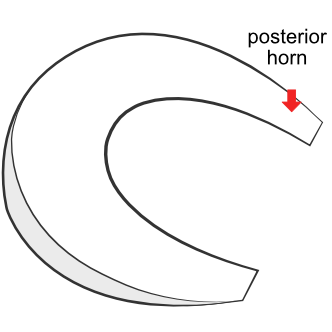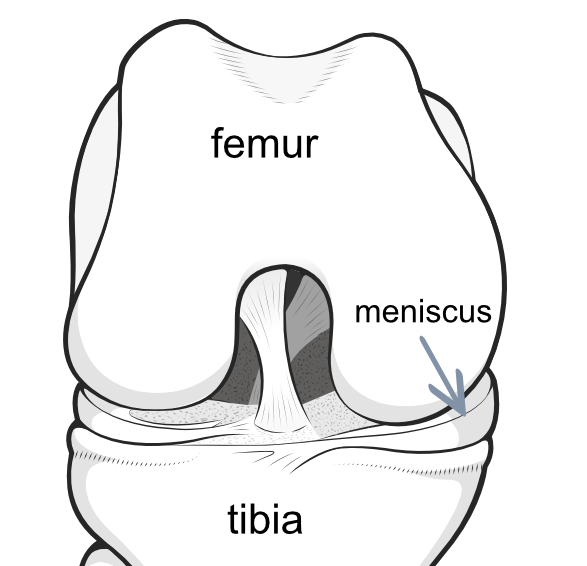The meniscus is crescentic, with two horns (like a new moon) - and the posterior horn is the one at the back.
 The horn of the meniscus at the back of the knee is the posterior horn, and the one at the front is called the anterior horn.
The horn of the meniscus at the back of the knee is the posterior horn, and the one at the front is called the anterior horn.Posterior horn tears
Tears through the body of the posterior horn may result in feelings of instability of the knee, but injuries may also affect the meniscus root in this area. The root is an extension of the posterior horn that beds down into the tibia bone below it. The root may be torn through its area of attachment to the meniscus, or it may actually pull up out of the bone, like t a carrot being pulled up. This renders the meniscus very unstable and the whole structure may actually be squeezed out of its normal position (meniscal extrusion).
Visualisation of the posterior horn
Because the rounded ends of the femur obscure much of the posterior horn, it is difficult to see the structures at the back of the knee during routine arthroscopy. By putting the knee into a 'figure-4' position, the back of the joint can be opened up and the posterior horn can be examined with a probe.
